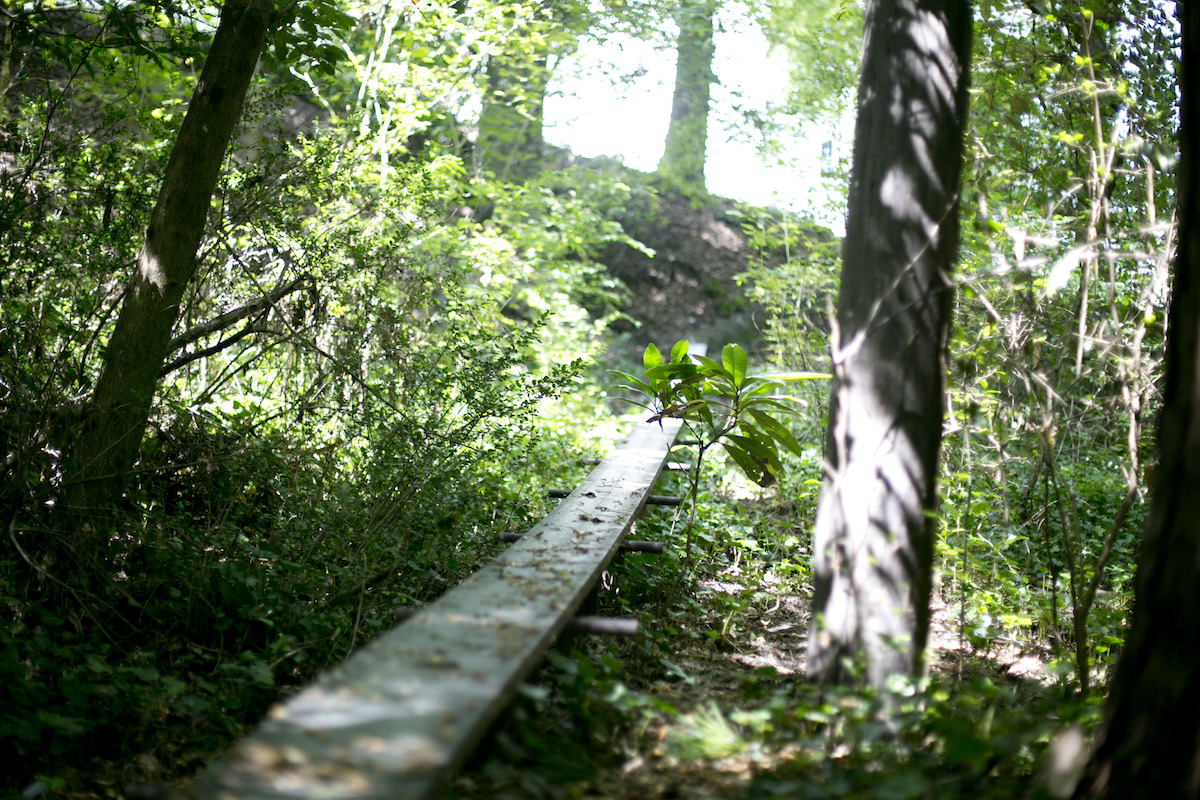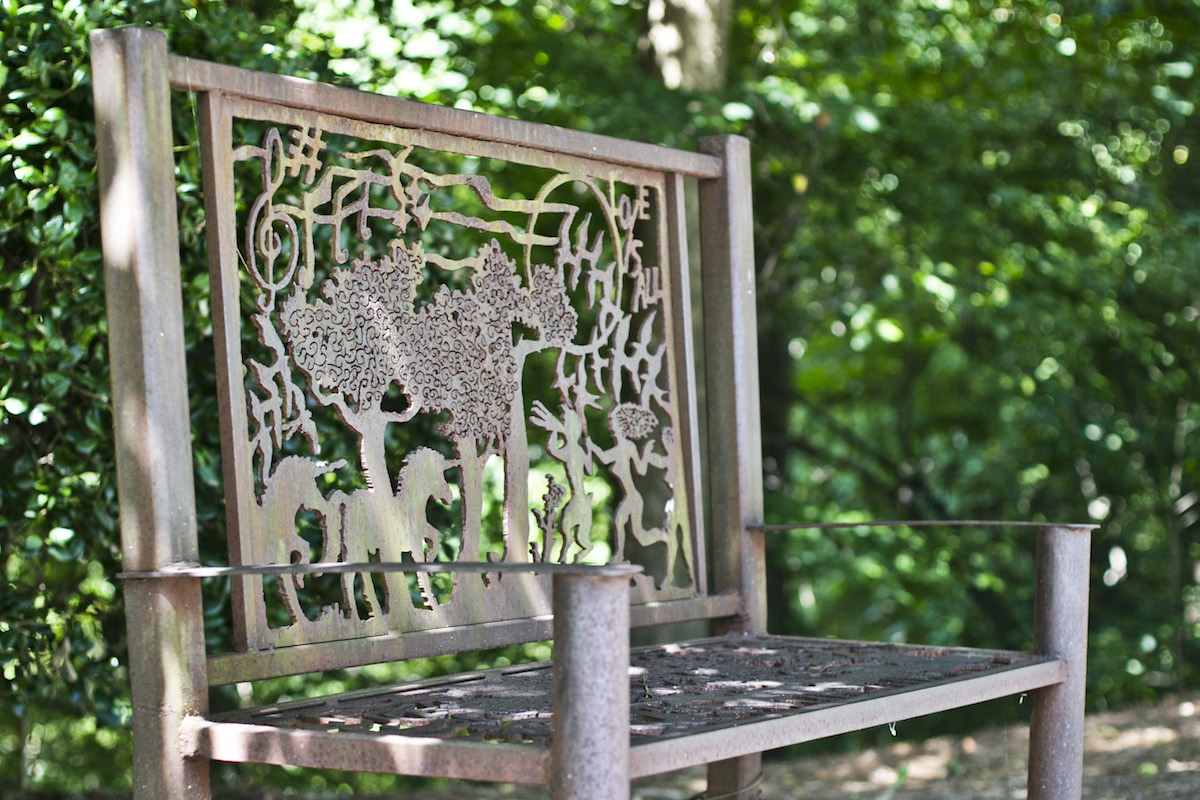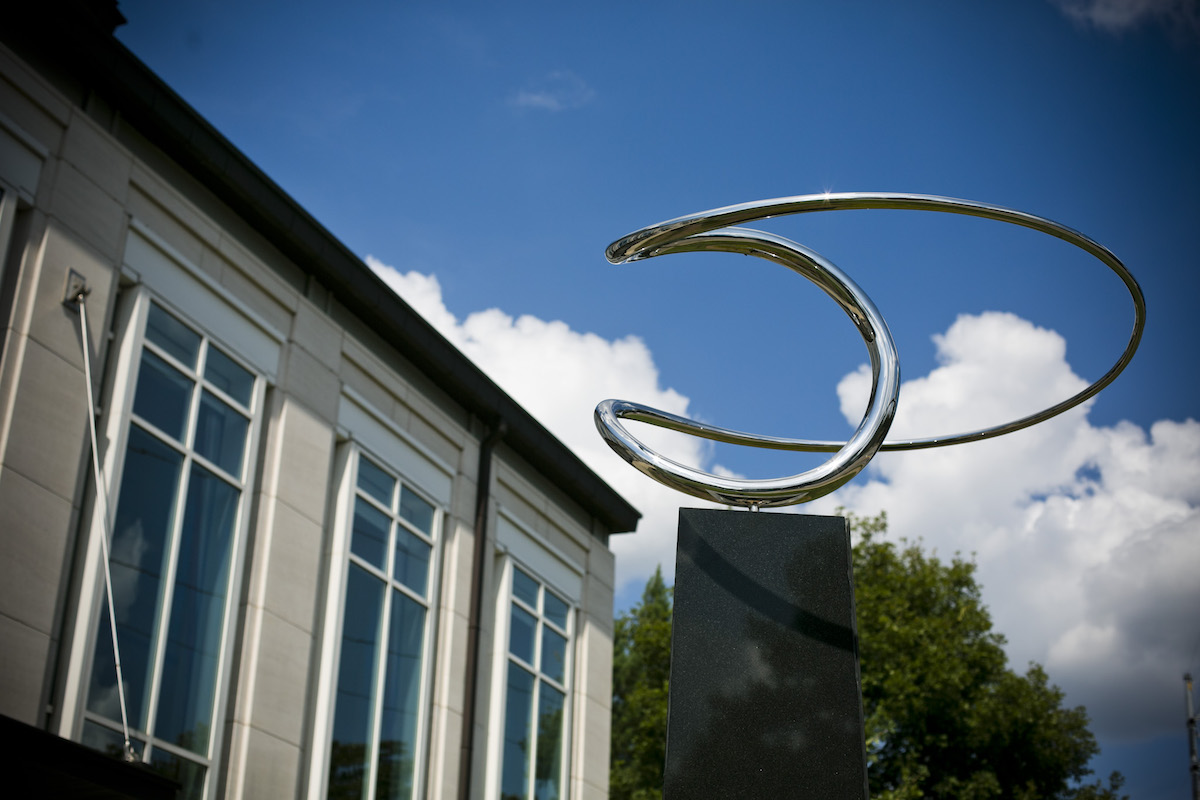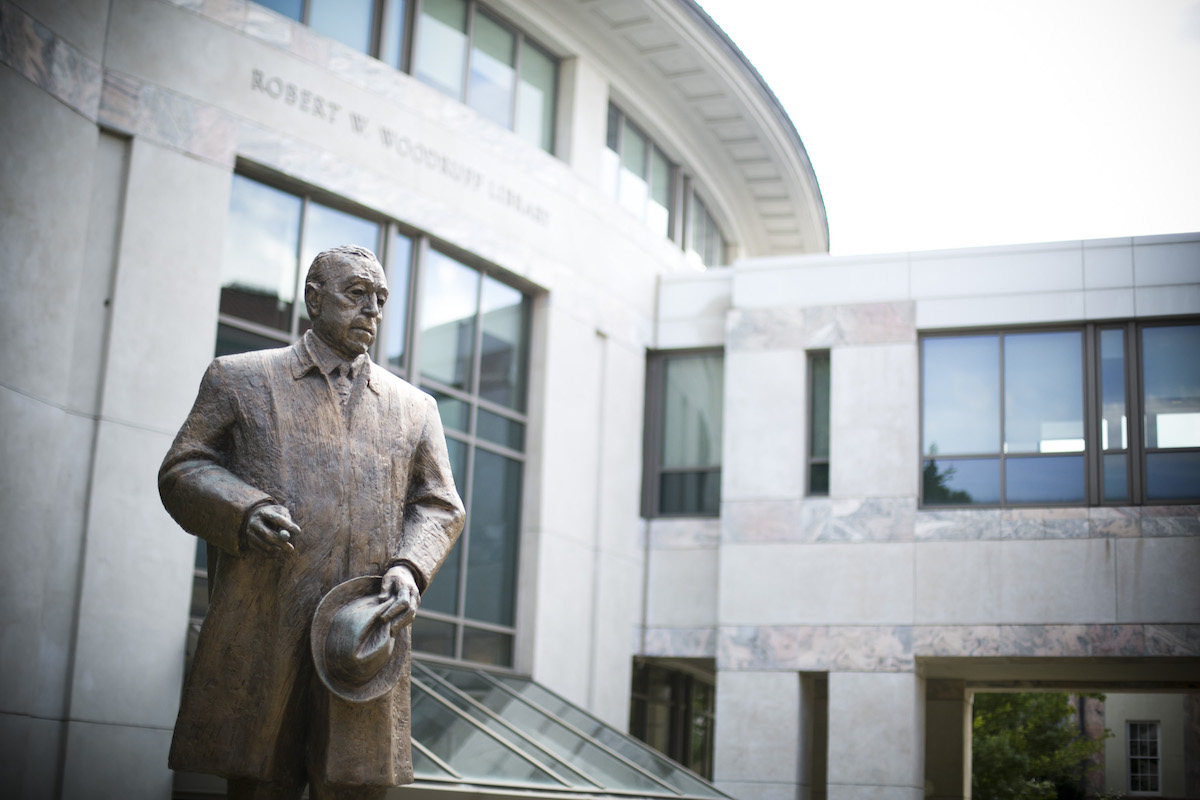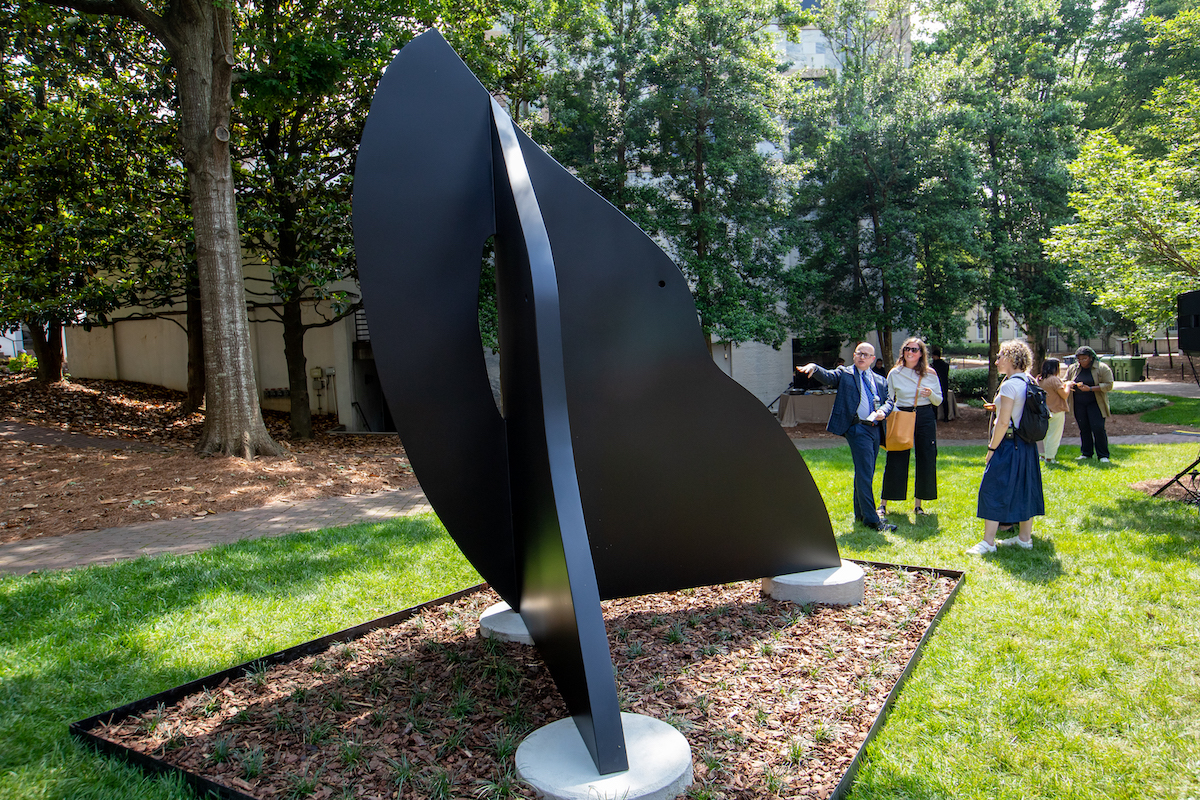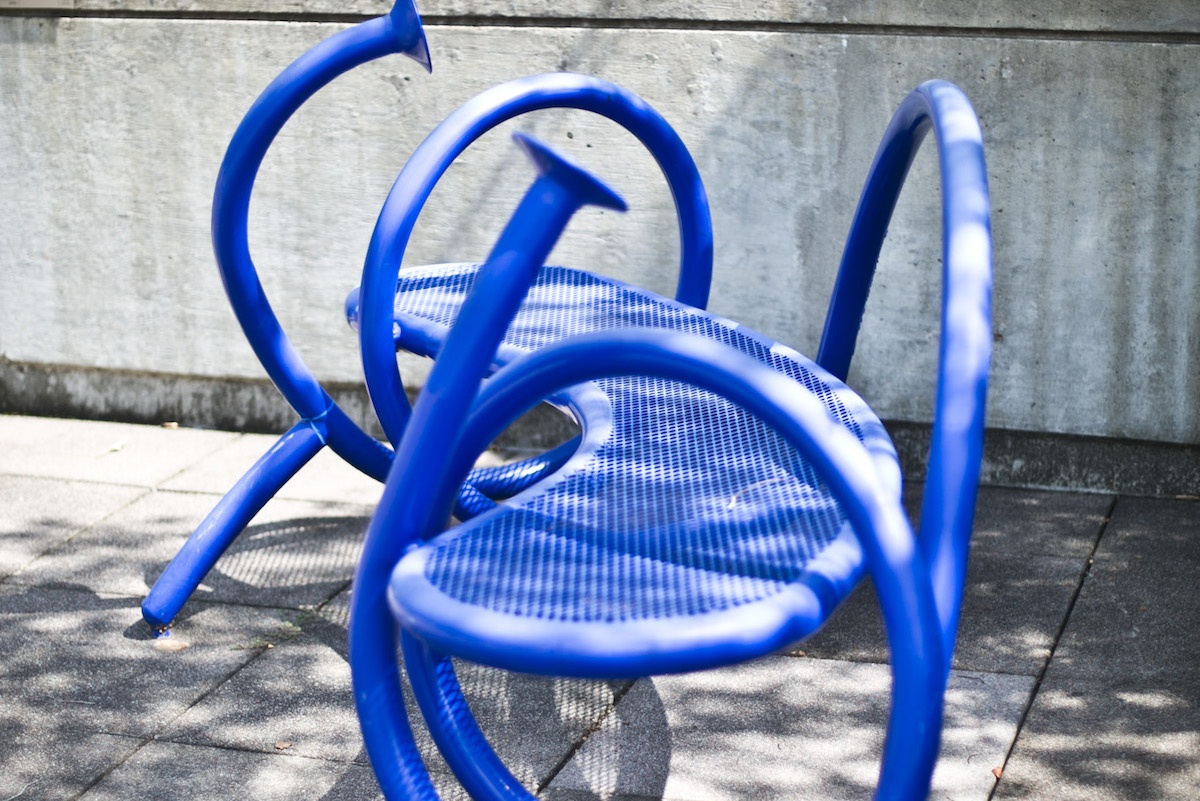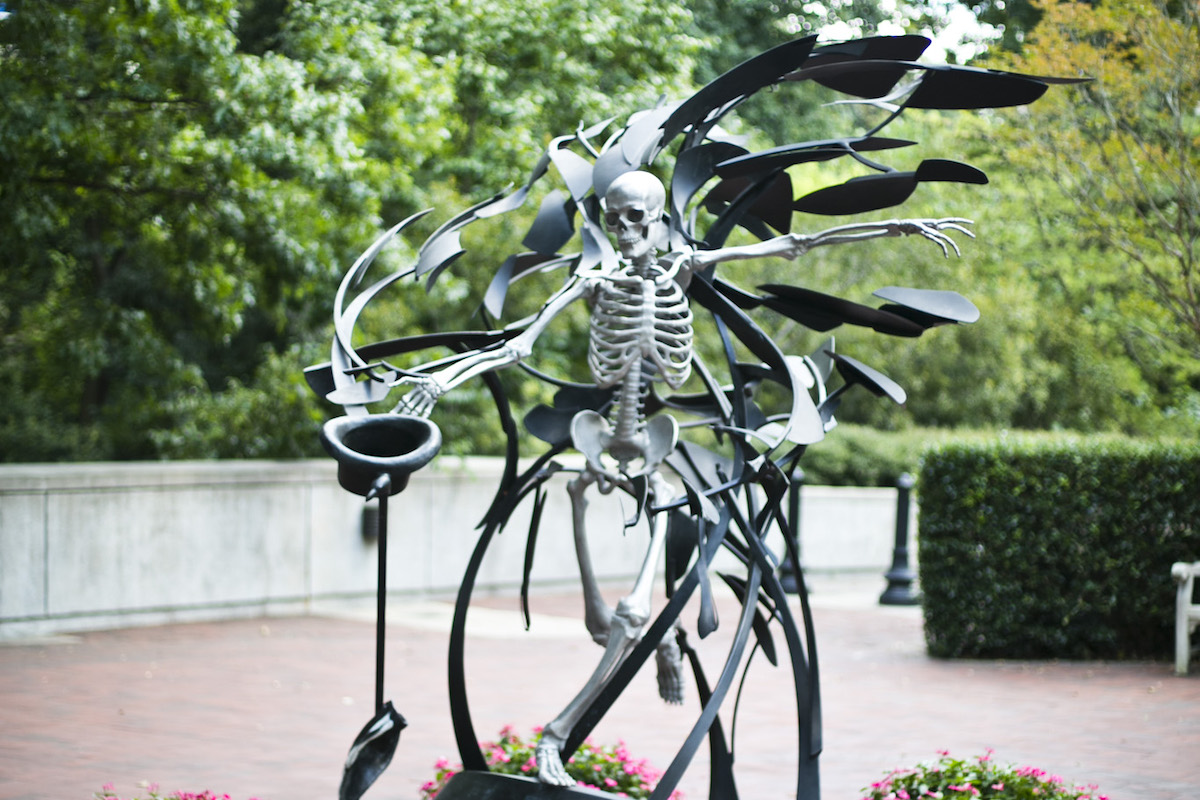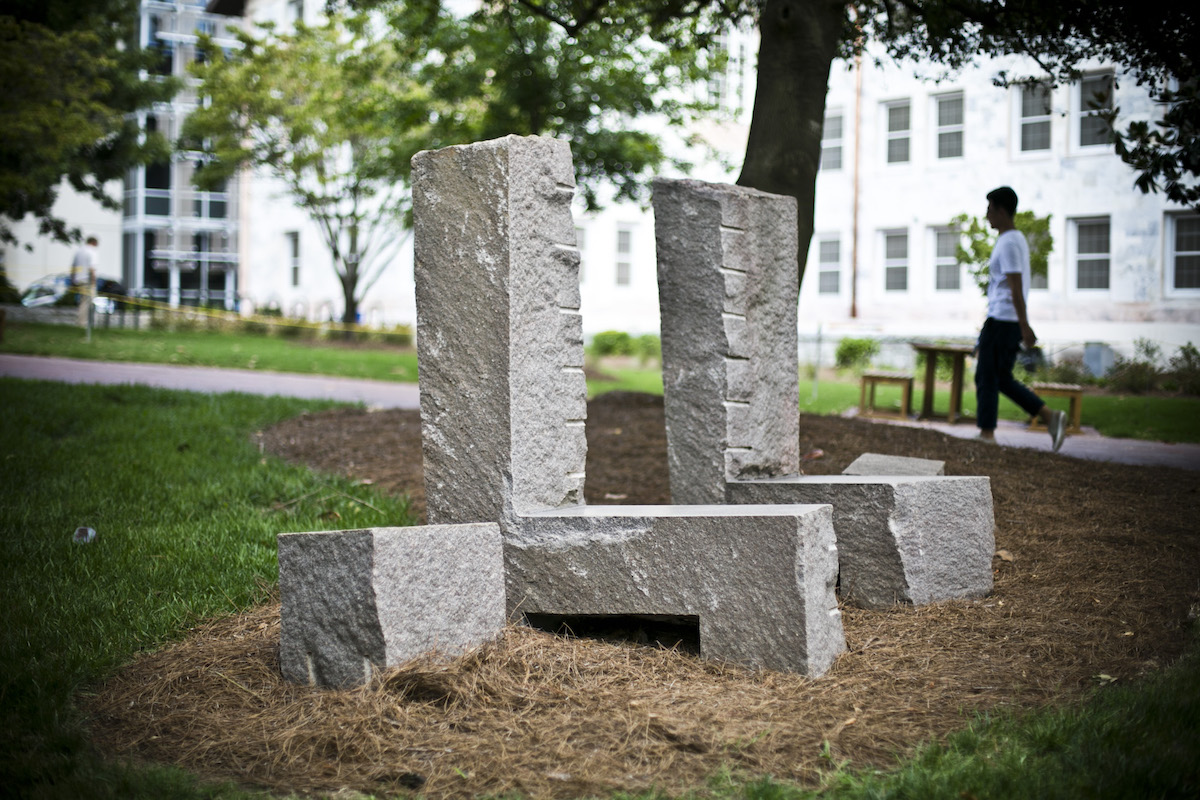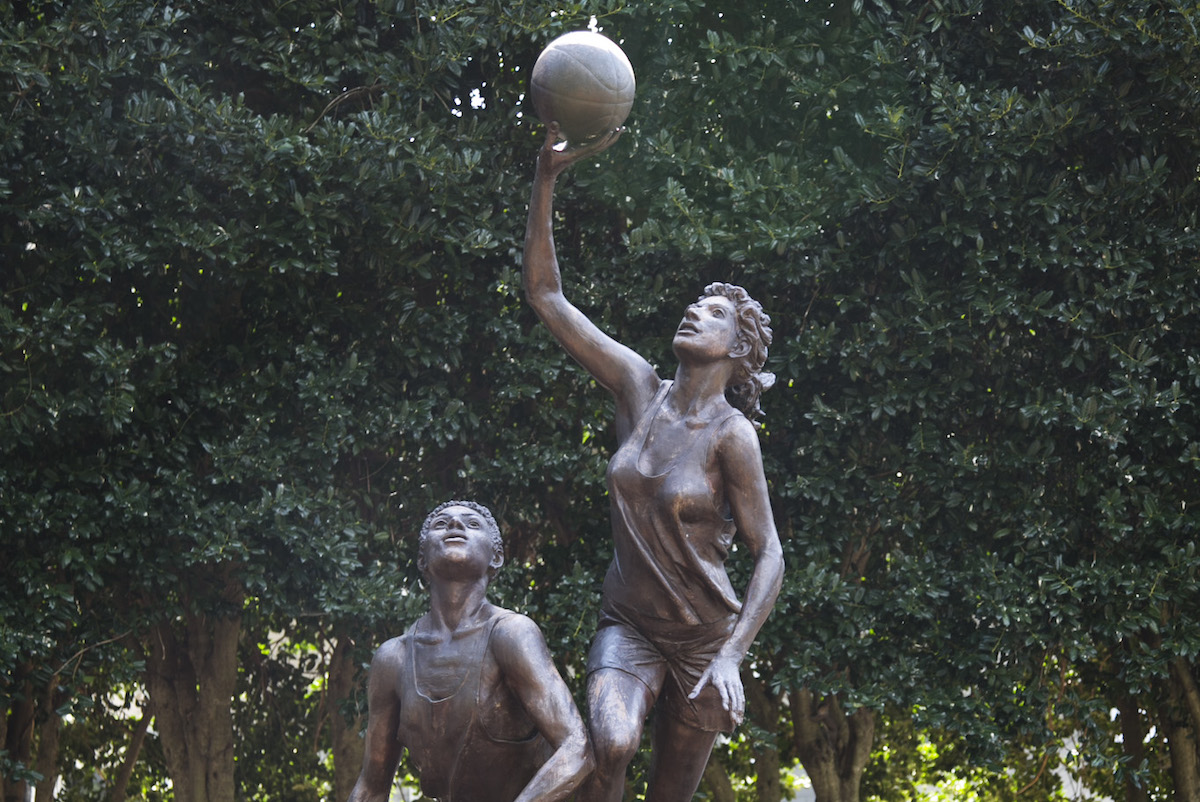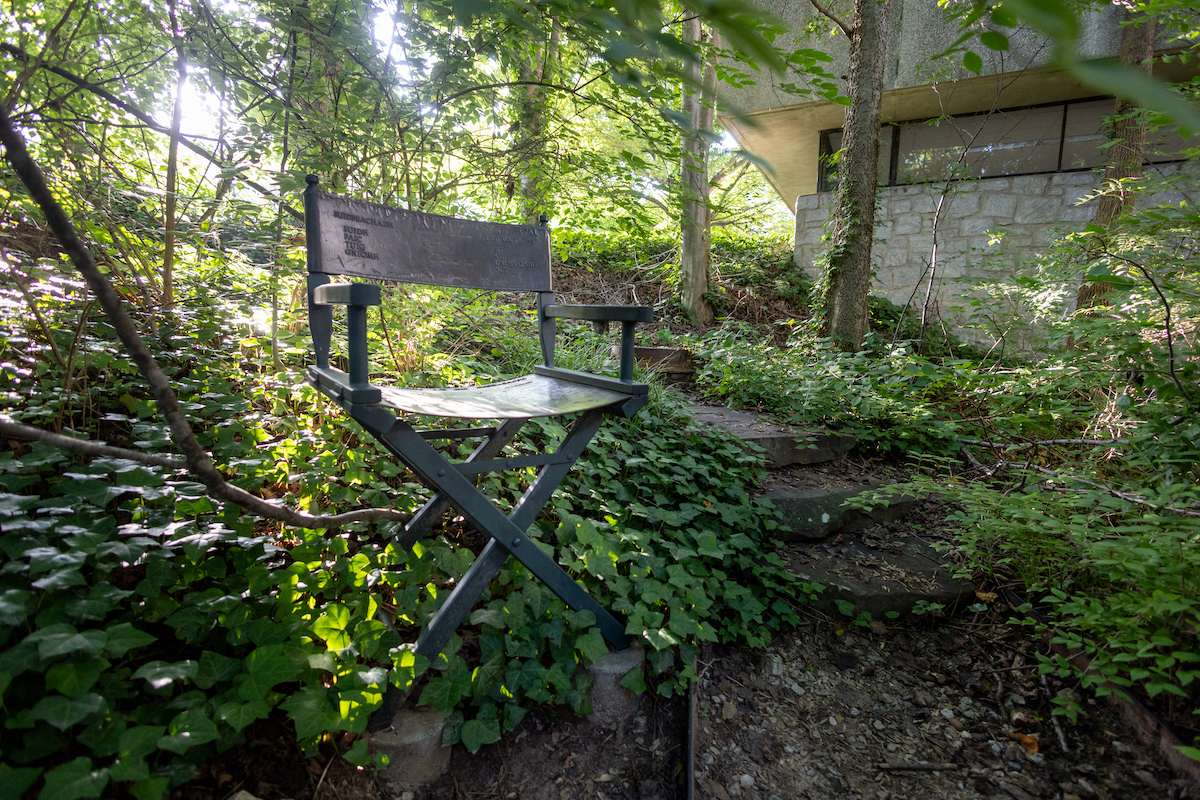Walk any distance among the picturesque trees, winding paths and marble façades of Emory’s Atlanta campus, and you’re bound to run into one of the many stunning pieces of public art.
The statue of Robert W. Woodruff watches over the entrance of his namesake library. An abstract figure greets passersby and encourages reflection. Chairs all over campus invite viewers to have a seat.
These few examples illustrate the diversity of pieces on display at Emory, some of which date back decades. David Schuster, chair of the Public Art Committee and professor in the School of Medicine, notes how public art touches viewers on a personal and community level.
“An encounter with art in a public place stimulates the senses, engages the intellect and awakens the imagination,” says Schuster. “It enriches the community and contributes to creating a place that invites return and reflection.”
It also greatly complements the goals and environment of Emory’s academic setting, he says.
“The experience of works of fine art is an essential part of the educational environment. Emory’s public artwork reflects our institutional culture, and embodies and expresses our academic values for students, faculty and staff, and for the visiting public and larger community,” says Schuster. “The cultural contribution of public art is woven into the fabric of life at Emory in a way that reflects our sense of community, celebrates diversity, exemplifies our purpose and embraces our common humanity.”
Read more about these pieces of public art, their histories and locations below. To explore these sites on campus, use the interactive map created by Emory’s Public Art Committee to guide your walk.
1. “Tower One” by Sol LeWitt
Quadrangle at White Hall
Facing the Quad, “Tower One” by minimalist artist Sol LeWitt was installed in 2004 and was the first significant piece of contemporary sculpture on campus. Funds from an anonymous donor who wanted to place a public sculpture on campus allowed Emory to purchase the piece, which at the time was only the third LeWitt on view in Atlanta.
A group of Emory art history professors collaborated to select “Tower One” from LeWitt’s 2002 series “Concrete Blocks.” The artist walked Emory’s campus with an art history professor to select the site for the sculpture.
To view “Tower One,” head to the southern façade of Goodrich C. White Hall that faces the Quadrangle on North Kilgo Circle.
2. “Source Route” by George Trakas
Baker Woodlands behind the Michael C. Carlos Museum
Art and land exist in conversation in “Source Route” by George Trakas. The piece, constructed from steel and wood, was installed in 1979, commemorating the symposium that celebrated the 50th anniversary of the university’s Phi Beta Kappa chapter.
The installation is named “Source Route” because Trakas saw the area as the origin of many things. More than 30 years later, Trakas, an accomplished environmental artist, returned to campus to revisit “Source Route” with students and faculty and received an honorary doctor of humane letters at Emory’s 169th Commencement.
To view “Source Route,” walk down to Antoinette Candler Creek from the bridge on Mizell Drive behind the Michael C. Carlos Museum.
3. “Emory Bench” by Horace Farlowe
Baker Woodlands at Fishburne Drive
The Emory Chairs Project was launched in spring 2003 to celebrate the opening of the Schwartz Center for Performing Arts. Through it, 37 fun and innovative chair displays were placed around campus produced by a variety of different artists — including “Aerial Chaises” by Elyse Defoor, featuring a dozen chairs dangling over the north entrance of the Schwartz Center.
One installment of the Emory Chairs Project that has stuck around decades after the project is “Emory Bench” by Horace Farlowe, who taught sculpture for many years at the University of Georgia’s Lamar Dodd School of Art before passing away in 2006. Constructed from Georgia marble and installed in 2003, the piece is integrated into the function of Emory’s campus.
Often, students and other community members can be found sitting on the bench reading, studying or taking in the views of campus.
To view “Emory Bench,” walk down Fishburne Drive at the Baker Woodland across from the Rich building near the Michael C. Carlos Museum.
4. “Untitled” by Harold Rittenberry
Fishburne Drive across from Glenn Memorial United Methodist Church
A neighbor of “Emory Bench,” “Untitled” by Harold Rittenberry is another member of the Emory Chairs Project. Rittenberry, a self-taught artist from Athens, Georgia, has created many works for public and private collections.
The piece was installed in 2003 and is constructed from Corten steel, which, over time, becomes encased in rust to protect the metal interior.
To view “Untitled,” walk across from the playground at Glenn Memorial United Methodist Church toward Fishburne Drive.
5. “Construction #200” by José De Rivera
Schwartz Center for Performing Arts
Built from concrete, black granite and stainless steel, “Construction #200” sits just outside the Schwartz Center for Performing Arts. The piece was donated to Emory by the Schwartz Center’s namesake, Donna and Marvin Schwartz. “Construction #200” was created by abstract sculptor José De Rivera, who was known for twisting metal into unique, three-dimensional shapes.
To view “Construction #200,” walk down the sidewalk on North Decatur Road in front of the Schwartz Center for Performing Arts.
6. “Director’s Chair” by George Beasley
Behind Robert W. Woodruff Library
Another piece featured as part of the Emory Chairs Project in 2003, “Director’s Chair” by George Beasley features steel and bronze formed into the iconic shape of a director’s chair. Beasley, who retired as regent’s professor emeritus of art at Georgia State University, holds performances for on-site installations, which allow onlookers to experience the “dance” of iron making. What remains is the constructed piece, a visual testimony to the event.
To view “Director’s Chair,” locate the nature walk area behind the Robert W. Woodruff Library. The piece is to the east facing the first and second floors of the library.
7. “Robert W. Woodruff” by William Joseph Thompson
Front of Robert W. Woodruff Library
Just in front of the library that bears his name, “Robert W. Woodruff” by sculptor William Joseph Thompson has remained a towering figure since the time it was brought to campus. The bronze sculpture honors the former president of The Coca-Cola Company and benefactor of Emory, who, along with his brother George Woodruff, donated a then-record $105 million to the institution.
However, the sculpture didn’t always live in its prominent place on campus. The piece was commissioned by The Coca-Cola Foundation and initially placed on the front lawn of Atlanta’s High Museum of Art in 1983. Woodruff attended the dedication ceremony at 93 years old.
The statue went into storage in 1995 and reemerged in its now-home in 2000 after Emory leadership reached out to the Woodruff Arts Center to bring the piece to campus. The Woodruff Arts Center in Midtown Atlanta is the home of the Alliance Theatre, Atlanta Symphony Orchestra and the High Museum of Art.
To view “Robert W. Woodruff,” head to the front of the Robert W. Woodruff Library.
8. “Resting Figure” by Amy Pleasant
Northeast corner of Callaway Memorial Center at North Kilgo Circle
Honoring the sacrifice and dedication of Emory Healthcare and Emory University personnel during the COVID-19 pandemic, “Resting Figure” by Amy Pleasant is a cast bronze sculpture. The piece initially began as a fired and painted clay sculpture in 2018 by Pleasant, then the idea was scaled up to the sculpture on Emory’s campus today. The location on campus, by Emory University Hospital, is meant to produce a space for reflection.
The acquisition of the sculpture, dedicated in the summer of 2023, was made possible by Rebecca and Sidney Yarbrough, longtime Emory supporters with deep ties to the School of Medicine.
You’ll find “Resting Figure” at North Kilgo Circle by Emory University Hospital.
9. “Whisper Chair” by Jim Gallucci
Tull Plaza
A popular piece during the Emory Chairs Project in 2003, “Whisper Chair” by Jim Gallucci invites visitors to take a seat with its bright blue powder-coated steel.
Gallucci, who has worked for several decades as a sculptor based out of Greensboro, North Carolina, has created many benches of playful designs and colors to promote interaction between community members. “Whisper Chair” features two pipes on both ends of the bench that visitors can whisper into and be heard through the other end of the pipe.
Go to Tull Plaza to view “Whisper Chair.”
10. “Dooley Goes on Forever” by Matthew Palmer
Asbury Circle
Celebrating Emory’s unofficial mascot that promotes mischief and misrule, “Dooley Goes on Forever” is a stainless steel and fabricated bronze sculpture installed during Homecoming in 2008. A committee of students selected sculptor Matthew Palmer to create the piece.
The piece shows a life-size Dooley emerging from a bladed vortex of energy while shedding his skeleton costume to reveal his true form — a skeleton — and tipping his top hat.
To view “Dooley Goes on Forever,” head to Asbury Circle by the Anthropology Building.
11. “Stone Grove” by Richard Nonas
Behind Asbury Circle
As if inviting individuals to sit a spell, “Stone Grove” by Richard Nonas sits under a shady tree in the heart of campus. The chair-like sculptures and side tables made of granite were a gift from the Class of 2000. The often-disturbed grass and pine straw around the sculpture indicates that the pieces are used by individuals to stop for a moment, sit in the shade and take in the surrounding beauty of campus.
Nonas, an environmental sculptor, utilizes minimalism in his work, exemplified by the simplicity of “Stone Grove,” which marks the space on the hill beside Cox Hall as a meeting space.
You’ll find “Stone Grove” behind Asbury Circle close to Alabama Hall.
12. “An American Dream” by Wayne Southwick
Woodruff Physical Education Center
Under shady trees in front of the Woodruff Physical Education Center, “An American Dream” by Wayne Southwick was installed in 2003. Southwick, the former chief of orthopedic surgery at Yale University School of Medicine, was an accomplished sculptor during his life and had pieces on Yale’s campus.
“An American Dream” depicts a young man and woman playing basketball, with the female figure making the basket. The title of the sculpture is a reference to equality for women’s sports and the realization of men’s activities and ambitions.
To view “An American Dream,” head to the shaded area at the front entrance of the Woodruff Physical Education Center.

